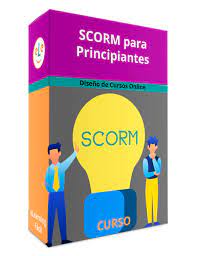We all know that corporate L&D is one of the most essential components of business growth. But, are you doing enough to meet your employee’s learning needs? Going by the reports, 56% of the HR managers would answer this question with a big “NO”!
Recently, the US Bureau of Labor Statistics reported that in most of the companies with 100-500 employees, only 6 minutes of training was provided in 2018! From this devastating stat, a definite question arises, where are we lacking?
If we go in depth of the problem, we will realize that most of the L&D managers spend more than 50% of their time developing learning materials. But, when it comes to managing the previously generated training modules, they fail miserably.
So, if we succeed in managing our previous learning documents better, we might not need to develop new learning modules frequently. It will help us devote more time to train the employees. And this is where SCORM Compliant Learning Management Systems play a big role!
What does SCORM Compliance Mean?
Suppose you have developed a training module and uploaded it in your current LMS. But, a few days later, due to some technical glitches, your organization decides to have a new LMS setup. Then, you will need to develop a new training module again, right?
Well, if your Learning Management System is SCORM compliant, then you might not have to do so!
SCORM stands for “Sharable Content Object Reference Model”. If your LMS is SCORM Compliant, it means that all its content is interoperable. In simpler words, you can upload such content on any LMS that is SCORM compliant.
This model was first initiated in 2000 by the DoD’s ADL initiative. It has seen regular updates since then. Today, we have three more advanced versions of SCORM, named SCORM 1.1, SCORM 1.2, and SCORM 2004.
The latest versions of SCORM have three major sub-specifications. But before discussing them, let’s understand what SCO is.
All You Need To Know About SCO
In most simple words, an SCO is a “Sharable Content Object”. It is the smallest piece of content that can be uploaded or shared through SCORM Compliant Learning Management Systems.
According to the SCORM guidelines, the learning content uploaded in it must have the following qualities:
● The content must be present in a ZIP file
● It must be well-described in an XML file
● The SCORM learning content modules must use Javascript for communication
● They must use XML-based sequencing rules
An SCO is the fundamental unit of SCORM compliant LMS.
Sub-Specifications of SCORM
SCORM has three sub-specifications: Content Aggregation or Content Packaging, Run-Time Environment, and Sequencing.
Content Aggregation or Content Packaging Model
SCORM has a dedicated Content Aggregation Model that explains the process in which an authoring tool must pack the SCORM LMS content. Though it is a comprehensive model, but the two most important points of SCORM CAM are:
● The transferred content must be packed in ZIP files, and
● The content must be well-described, and must have metadata which will help in its easy finding by the LMS users.
Run-Time Environment
The main purpose of the SCORM RTE is to standardize the data model, API, and other technical details for all SCORM compliant LMS. It ensures that the uploaded content will open correctly in all SCORM compliant learning management systems, and the users will be able to reap full benefits of it.
Sequencing
Using SCORM’s sequencing guidelines, the L&D managers can decide the sequence of modules, how their learners would navigate through the module, and which lesson they should complete first. In addition, the managers can also track the progress of employees, as they can see what percentage of courses have been completed and how many modules are left.
Benefits of SCORM Compliant Learning Management System
SCORM compliance gives multiple benefits to you and your users. Let’s take a look at some of them.
Adaptability
SCORM compliant content is extremely flexible. Using different sequences of SCOs, the training managers can create different types of courses. It helps them to cater to specific needs of individual employees, without developing an entirely new course.
Interoperability
As we discussed in the very beginning, SCORM allows you to upload and use the same learning modules in all SCORM compliant LMS. Thus, you don’t need to recreate the learning content in case your company replaces the LMS software.
Reusability
SCORM allows you to use the older learning modules. It is extremely beneficial for those companies who produce a large volume of training content. They can easily modify their courses by resequencing the SCOs, and they can even use the stored courses that have been used previously.
Conclusion
SCORM compliant learning management systems make eLearning and training content flexible, adaptable, interoperable and reusable. Moreover, it standardizes the type and layout of elearning content globally.
For businesses, it saves a lot of time, and the training managers can now create, upload and manage learning modules very easily. Hence, it increases training time and employee satisfaction.
Author Bio:
Hope James
Hope James has been working in Acadecraft for more than 5 years now. She has seen the evolution of eLearning very closely, and has detailed knowledge of all the latest eLearning technologies. She is known for writing highly insightful articles on different topics of eLearning, which help companies to implement more compact eLearning strategies.
Apart from that, if you are interested to know about Creating a Great Business Marketing Plan then visit our Business category.













